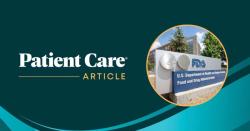© 2025 MJH Life Sciences™ , Patient Care Online – Primary Care News and Clinical Resources. All rights reserved.
Overcoming Barriers in Obesity and Hypertension Management: Practical Strategies for Physicians
Caissa Troutman, member of the Obesity Medicine Association, emphasizes the importance of shared decision-making in overcoming barriers.
In a recent interview with Patient Care®, Caissa Troutman, MD, physician founder of WEIGHT reMDy, a direct care weight wellness practice in Camp Hill, PA, explored the key barriers to managing obesity and hypertension effectively, from clinic challenges, such as time constraints and limited resources, to patient readiness for treatment. Above, Troutman discusses strategies to overcome these obstacles, including fostering open communication, leveraging a team-based approach, utilizing technology, and emphasizing accountability through consistent follow-up.
The following transcript has been edited for clarity and style.
Patient Care: What are the biggest barriers to managing both obesity and hypertension effectively, and how can physicians address these obstacles?
Caissa Troutman, MD: There are many barriers, and they come from both sides—providers and patients. From the provider standpoint, one challenge is a lack of education about lifestyle management strategies. Another is time constraints. With the limited time available in most appointments, it’s often impossible to fully address pharmacological therapy, let alone dive deeply into lifestyle interventions.
On the patient side, readiness can be a barrier. For example, some patients may be hesitant to start blood pressure medication and prefer to try non-pharmacologic approaches first. That’s where open communication and shared decision-making are essential. As health care providers, we need to be patient partners, fostering trust and maintaining a non-judgmental dialogue about weight and hypertension. While progress might not happen in the first visit, patients might become more open to recommendations over time, especially with consistent follow-up.
In terms of addressing these barriers, providers can expand their knowledge and leverage a team-based approach. Utilizing support staff—like nurses for follow-ups or registered dietitians for nutritional guidance—can make a significant difference. Technology is also a valuable tool; recommending apps to help patients monitor salt intake or track their progress can improve engagement.
Follow-up is crucial. Whether it’s with the provider, a nurse, or another team member, these touch points reinforce accountability. Patients often need that reminder to stay on track, as accountability plays a vital role in driving behavior change.
Related Content:



